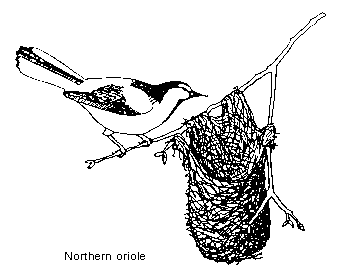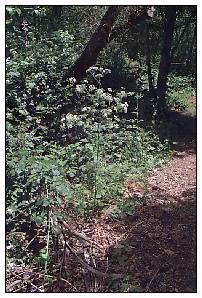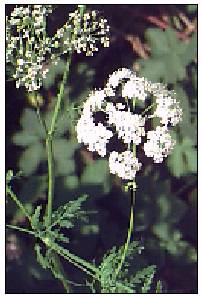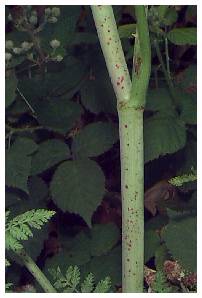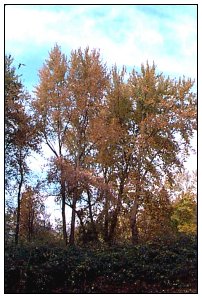 Talent Station 12: A Horse Can Be a Home
Talent Station 12: A Horse Can Be a Home
THE HORSE ARENA just around the bend at the south end of this path was developed through public/private cooperation. The Wrangler's Horse Club built the facility on property purchased with Greenway funds. The club maintains the right of first scheduling, but the public is allowed to use the arena at all other times.
Another example of cooperation can be seen in the woven bag nests that hang from the outermost branches of the cottonwoods and alders in this area. The orange, black, and white northen oriole weaves these elaborate pendulous baskets of any fine material available. Adjacent to hay fields, the nests are made of baling twine, but along the path, near the Wrangler Horse Arena, the orioles take advantage of the abundant supply of long, fine hair from the manes and tails of horses.
The plentiful green herb growing next to the path is poison hemlock (Conium maculatum). History tells us that a drink made from this plant was responsible for Socrates' death, and it is as deadly now as it was to the ancient Greeks in 400 BC. The leaves of this member of the parsley family look like carrots, to which it is related. Hemlock can be easily identified by the purple spots on the lower part of the stem. In a good location, it can grow six feet tall with much branching and numerous small white flowers.
